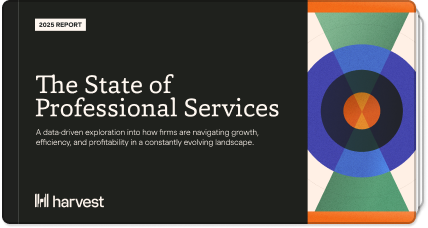Professional services firms are pushing for growth, with 41% of respondents to our latest survey making new business acquisition their top priority. However, only 20% of them have a reliable resource forecasting process in place. This gap reveals a dangerous imbalance: firms are chasing opportunity without the operational clarity to support it.
When new projects come in and teams are already stretched, things start to break. Missed deadlines, overworked teams, and shrinking margins are a sign that growth is outpacing capacity. That’s where resource forecasting comes in.
In this article, we take a look at how smarter resource forecasting empowers professional service firms to overcome these hurdles and scale in a sustainable, efficient way.

Lack of Resource Forecasting Stalls Growth
Forecasting is more than predicting project timelines or budgets. For professional services firms, it’s critical to align operations, teams, and strategies to avoid bottlenecks and inefficiencies as the business scales. Here’s why firms without adequate forecasting practices can fall behind:
Team Capacity Becomes a Black Box: By forecasting team capacity, firms can allocate resources effectively, avoid overburdening employees, and maintain project delivery timelines.
Uninformed Decisions Come at a Cost: Proactive forecasting informs decisions about hiring, client acquisition, and project prioritization, ensuring alignment with the firm's long-term growth goals.
Draining Your Firm’s Bottom Line: Firms with advanced forecasting processes are better equipped to hit profit targets. Our report showed that only 20% of firms consistently meet their profit margin goals, highlighting the need for better predictive tools to manage resources.
Lack of Forecasting Leads to Vulnerability: Predicting potential shortfalls in revenue, capacity, or profitability enables businesses to mitigate risks before they escalate.
For firms aiming to grow sustainably in a competitive industry, smarter forecasting is not optional.
Forecasting in Action: What Leading Firms Do Differently
Plan Team Capacity Without Guessing
Understanding your team’s availability is at the heart of effective capacity planning and resource management. Farryn Weiner, founder of Farrynheight, knows this all too well. “Human capital is what we do. You never know that what's going to surprise you on any given day. The same thing that makes forecasting exciting is what makes it really challenging,” she notes. Our report supports this with 47% of surveyed firms citing assessing team capacity as their primary goal for resource forecasting.
Link Capacity Forecasting to Profitability Goals
While 57% of firms set profit margin targets, only 20% consistently achieve them. Often, this gap stems from a lack of visibility into team capacity. When you can’t predict workload or assign resources accurately, even well-scoped projects slip out of budget—highlighting the need for smarter workforce capacity planning. Capacity forecasting helps you see ahead, so your staffing decisions support both delivery and profitability.
Forecast Resource Demand to Support Growth
Forecasting also plays a role in client acquisition and retention. The inability to predict future resource needs can prevent firms from confidently taking on new clients. By integrating forecasting into business development strategies, firms can strategically scale their client base while maintaining financial stability.
Forecast Future Workloads to Hire Intentionally
Scaling isn’t just about increasing revenue; it also involves maintaining a workforce capable of supporting that growth. Yet, 76% of firms surveyed expressed caution over significant hiring. Understanding future needs allows leaders to hire intentionally, ensuring workforce scalability doesn’t compromise sustainability.
Align Teams to Drive Strong Forecasting
Forecasting isn’t just a finance function. Operations, finance, and leadership all have a stake in resource allocation, project prioritization, and reporting alignment. A lack of unified forecasting processes can lead to silos, miscommunication, and inefficiencies.
Here’s How To Get Started Today (Without Rebuilding Everything)
Transitioning from reactive operations to proactive forecasting takes time and strategy. Here are actionable steps to get started
- Invest in the Right Technology: A powerful forecasting tool can provide real-time insights, reduce manual errors, and improve decision-making efficiency. In addition to providing real-time visibility across projects and teams, it should turn your data into actionable insights.
- Start Small, Gain Buy-In: Roll out forecasting processes within a single department or project before scaling company-wide. Demonstrating quick wins can help secure leadership buy-in.
- Align Goals Across Teams: Ensure the leadership, operations, and finance teams have a shared understanding of forecasting objectives to avoid misalignment.
- Measure and Refine Outcomes Continuously: Regularly compare forecasted outcomes with actual results to identify areas for improvement in data accuracy and methodology.
- Foster a Data-Driven Culture: Make forecasting part of your company’s cultural fabric by educating employees on the benefits and involving them in the process. Encourage teams to view forecasting as a collaborative effort rather than an isolated function.
From optimizing team capacity to hitting profit targets, proactive and data-driven forecasting enables firms to stay ahead in an increasingly competitive landscape. A tool like Forecast will allow you to connect the dots—across people, projects, and profits.
Firms that embrace clear, connected forecasting are the ones who scale smarter, deliver better, and protect their margins.
Try Forecast today to see how smarter forecasting and capacity planning drives stronger performance.















